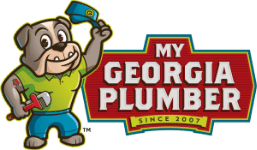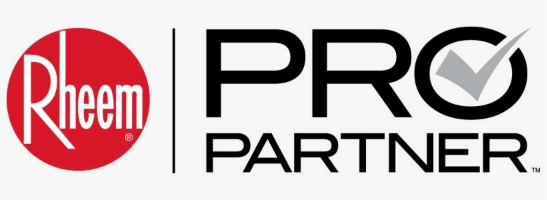
A continued summary of significant revisions of the International Plumbing Code to be published in the 2021 edition.
This is the continuation of a series of columns covering only the code changes that were approved as submitted from 2018 to the 2021 International Plumbing Code (IPC) change hearings. There were many code change proposals and two rounds of code hearings for the 2018 IPC. The following is a summary of the significant code changes that were approved during the International Code Council hearings in Columbus, Ohio, and Richmond, Va.
These code changes will appear in the 2021 edition of the International Plumbing Code, which will soon be published and available for jurisdictions to consider for adoption. I recommend you refer to the 2021 IPC for the final version of any code changes reported on hereinafter.
Proposed additions are underlined and deletions are struck through. They are followed by the proponents’ published reason statements, along with any of my comments as noted.
Code Change: IPC Section 412.5 and Chapter 15
The following code change proposal was to add a reference to a new standard developed by the American Society of Sanitary Engineering. It is related to water heaters with temperature controls that match the control requirements in various mixing valve standards.
Add the following standards to Chapter 15:
1084-2018:
Performance Requirements for Water Heaters used as Temperature Limiting Devices
1082-2018:
Performance Requirements for Water Heaters Used as Temperature Control Devices for Hot Water Distribution Systems.
Revise as follows:
IPC 412.5 Bathtub and whirlpool bathtub valves.
The hot water supplied to bathtubs and whirlpool bathtubs shall be limited to not greater than 120°F (49°C) by a water-temperature limiting device that conforms to ASSE 1070/ASME A112.1070/CSA B125.70 or CSA B125.3 or by a water heater complying with ASSE 1082 or ASSE 1084, except where such protection is otherwise provided by a combination tub/shower valve in accordance with Section 412.3.
Proponent’s reason statement: There are two new standards for water heaters, ASSE 1082 and ASSE 1084. These water heater standards are equivalent to ASSE 1017 and ASSE 1070, respectively. As such, they have the capability of providing an equivalent level of performance as the currently listed water-temperature limiting device or corresponding mixing valve.
Water heaters complying with either one of these standards can provide tempered water within a range of a few degrees, depending on the flow rate. The temperature range is similar to the allowable temperature range for an ASSE 1070/ASME A112.1070/CSA B125.70 device.
ICC staff analysis: A review of the standards proposed for inclusion in the code, ASSE 1084-2018 and ASSE1082-2018, with regard to the ICC criteria for referenced standards (Section 3.6 of CP#28) will be posted on the ICC website on or before April 2, 2018.
My comments: There were a few issues with this code change. First, it slipped through the system at the last minute because the ASSE 1082 and ASSE 1084 standards were not published until after the first round of code hearings. The proponent asked the code committee to approve the code change without the committee reviewing the final version of the standard, so not much scrutiny was put into reviewing the standards.
The ASSE 1082 standard is the standard for water heaters used to supply hot water to hot water distribution systems. When these systems use heat for thermal disinfection of Legionellabacteria in hot water systems, the temperatures for an entire building water distribution system would need to reach a thermal disinfection temperatures of more than 158 F while flowing hot water from every fixture in the building for a period of 20 minutes, according to the industry standards, guidelines and most water management plans.
The temperature for instantaneous thermal disinfection is 158 F, so many water management plans and guidelines round up the temperature with a safety factor of two degrees to 160 F. They also require the disinfecting hot water to flow through each branch and fixture for a period of 20 minutes to allow for heat to travel through the biofilm, scale, sediment and the wall of the pipe, vale or fitting in order to thermally disinfect or kill bacteria embedded in these areas.
The water heaters conforming to ASSE 1082, under normal operating conditions, should be capable of continuously maintaining hot water distribution temperatures above the Legionellagrowth temperature of 122 F throughout the entire system, including accounting for heat loss and the temperature of the hot water return piping.
Typically, design professionals would add a safety factor, which is why the ASHRAE Guideline 12-2000 has a two-degree safety factor requiring a minimum of 124 F in the hot water distribution system. The lowest temperature location in the circulated hot water system is just before hot water return connects to the water heater, and this is where a temperature gauge should be located to verify continuous temperatures.
The temperatures at the temperature gauge located at the end of the hot water return system should be above the Legionella bacteria growth temperature. When performing a thermal disinfection, this same location should be used to verify that the hot water temperature remains above 158 F to 160 F, or whatever the water management plans calls for the disinfection temperature to be.
Water heaters that are located in hot water distribution systems that do not plan on utilizing heat to control Legionella bacteria growth or water heaters that cannot reach or maintain disinfection temperatures should be able to resist the water treatment chemicals that are commonly used to control Legionella bacteria growth (chlorine, chlorine dioxide, monochloramines, copper-silver ionization, ozone, etc.).
Periodically, when hyper-chlorination is done to disinfect the entire system, chlorine levels can reach as high at 200 ppm for several hours. Water heating equipment and other components in hot water systems should be tested for chemical resistance at the levels at or above the levels the chemical treatment systems will utilize for emergency chemical disinfection levels, if the water heater cannot thermally disinfect.
Heat Loss in Distribution Systems
The current ASSE 1082 and 1084 standards do not have a test for chemical resistance for the above disinfection conditions. For hot water distribution systems, there is always a temperature drop or heat loss in the circulated hot water loop, and this is measured with a temperature gauge at the hot water return location or calculated with a given temperature differential in the hot water return loop.
Often, changes in the insulation type or thickness will affect the return temperature. The lower the heat loss in the hot water loop, the higher the circulation flow rate needs to be. In larger buildings, it may be difficult to have smaller temperature differences without having very high flow velocities in the circulated piping, and this could erode copper pipe and copper alloy (brass) fittings.
The hot water supply temperature feeding the hot water distribution system needs to account for the heat loss in the system and still maintain at least 124 F in the hot water return connection. The outlet of the ASSE 1082 water heater or an ASSE 1017 temperature-actuated mixing valve delivering hot water to the distribution system would need to be a minimum of 134 F. If there is a 10-degree loss in the system, the return temperature needs to be maintained at or above 124 F.
If temperature-actuated mixing valves are used, there should be a difference of about 10 degrees in the mixed outlet temperature and the incoming hot water temperature, so there would need to be a hot water storage/delivery temperature of 144 F or higher.
ASSE 1082 hot water distribution system water heaters that have their temperature control limits matching those of ASSE 1017 (Performance Requirements for Temperature Actuated Mixing Valves for Hot Water Distribution Systems) would allow a sudden 14-degree change in temperature and still meet the standard. That would not be a safe condition and could present a scalding and thermal shock hazard.
These temperatures are not equivalent to the temperatures in the ASSE 1084 water heaters standard or the ASSE 1070 temperature-limiting devices standard and they do not provide an equivalent level of performance.
The ASSE 1084 standard was developed based upon the temperature limits in ASSE Standard 1070, Performance Requirements for Temperature Limiting Devices, which has a temperature fluctuation of only a few degrees and it shuts down if the temperature reaches the pre-set limit.
The allowable temperature difference and reaction time is significantly different for these two valves, and the two water heaters, yet the proponent’s written statement is that they are “capable of performing at an equivalent level of performance” is simply incorrect. The temperatures of the 1082 and 1084 devices are not equivalent.
ASSE has always had the position that ASSE 1070 devices are scald-prevention devices, and that devices conforming to ASSE 1017 are not considered anti-scald devices.
There were some models of ASSE 1017 devices utilizing older bi-metal coil technology for thermal elements, which had slow reaction times and less force to operate the temperature control shuttle, so they were not very accurate. Bi-metal devices needed a greater difference in the hot and cold temperatures for the bi-metal coil to work properly.
When the thermal elements in a bi-metal coil type valve get larger, flows are smaller, and the return temperature gets close to the supply temperature, the accuracy of the bi-metal coil drops off. The working group did not want to develop a standard that made one technology obsolete, so the bi-metal coil technology is what set the bar low for performance with respect to the ASSE 1017 standard.
Larger ASSE 1017-type valves (over 40 gallons/minute) were allowed to have a plus or minus seven-degree temperature fluctuation in the mixed water temperature. This is because they have a difficult time controlling the outlet temperature in large systems when only one or two fixtures are flowing.
This large mixing valve temperature control issue prompted the development of high-low mixing valve stations, which use a smaller mixing valve with a pressure-reducing valve that forces the water through the smaller valve until the pressure drop is enough to allow flow through the larger valve. This seemed to address the inaccuracies of the larger bi-metal coil type valves’ inability to control temperature accurately at low flows. Since then, digital mixing valves have taken on this temperature control function with much greater accuracy.
Other mechanical-type valve manufacturers had a somewhat similar, yet much smaller, drop-off in performance at lower flows with larger valves, so eventually many manufacturers offered high-low valve models. When bi-metal coil-type valves were used in recirculated systems with larger mixing valves, they experienced problems maintaining temperature control within the 14-degree range allowed for larger valves.
It is for these reasons the ASSE 1017 standard has different permissible temperature control variations based on the flow rate (size) of the valve than the ASSE 1070 point-of-use standard. These variations are covered in Table 1 of the ASSE 1017 standard. The committee developed a table in the standard that allows a larger temperature fluctuation of plus or minus 7 F (or a sudden 14-degree change in temperature), and the valve will still pass the ASSE 1017 standard.
Eventually, ASSE decided that this was not accurate enough to be considered a scald prevention device, so it published a white paper confirming that an ASSE 1017 device is not a scald prevention device.
Many of the people on the ASSE 1017 standard committee that I participated with understood the 14-degree temperature swing and why it came to be allowed in the standard. There was an important requirement for the ASSE 1017 temperature-actuated mixing valve to be located at the source or at the water heater.
It was also understood that, generally, the larger ASSE 1017 valves were used in larger buildings, which were almost always circulated with a minimum flow of water that would cause turbulent flow. The circulated flow turbulence would blend or flatten any spikes of hot water temperature on the outlet of the ASSE 1017 valve as the water flowed through the distribution piping.
Water Heaters and ASSE 1070
Before the ASSE water heater standards were developed, a tankless electric water heater manufacturer came to me and asked if its product, a point-of-use water heater, could be tested and listed to a modified version of the ASSE 1070 standard for temperature-limiting devices (point-of-use mixing valves with temperature-limiting capabilities).
I brought the question to the ASSE Product Standards Committee meeting and asked if performing a modified test for a tankless water heaters equivalency to ASSE 1070, by limiting the hot water temperature, would be acceptable. The committee said no, the ASSE 1070 standard is clearly for devices that mix hot and cold water. The manufacturer could apply for a new standard to develop a test for temperature-limiting, point-of-use water heaters for that application.
I relayed the information to the manufacturer, which then requested ASSE to develop a new standard for point-of-use water heaters that meet the requirements of ASSE 1070.
ASSE published a notice to the industry and all water heater manufacturers, and in industry publications, that a new standard would be developed for “water heaters with integral temperature controls.” At the first meeting, many water heater manufacturers attended and many did not have products that fit into a point-of-use water heater category. Many were not familiar with the ASSE temperature control standards or with the various technologies and fuel sources available with tankless or point-of-use water heaters.
Most of the manufacturers understood this was a generic standard for a water heater that has temperature controls and they wanted to participate in the standard because most water heaters would heat water, but they do not accurately control the outlet hot water temperature.
Most water heater manufacturers wanted this standard to cover their products. This caused the first standard to be ASSE 1082 for distribution systems instead of point-of-use systems, which was the original intent of the standard. This was because there were more manufacturers of large water heaters in the meetings. A draft standard was developed using modified versions of the ASSE 1017 temperature-actuated mixing valve standard for hot water distribution systems and the ASSE 1070 temperature-limiting valve standard as a guide.
When the committee met, there was confusion because many water heater manufacturers did not understand the system engineering, temperatures, flows required for temperature maintenance, flow balancing for branch lines, friction loss and hydraulics associated with pressure and flow dynamics, and the differences between point-of-use devices and devices that supply hot water to the distribution system. These differences were not clearly explained in the scope of each temperature control standard.
The manufacturers of large water heaters wanted those large water heaters to also meet the requirements for point-of-use, temperature-limiting device standards and all the other water heater temperature control standards that were discussed for specific applications. These applications included temperature control standards for emergency fixture controls, gang shower controls, point-of-use controls and distribution system (source) controls.
It took a few meetings and a few emails to educate the water heater manufacturers and a few others who were new to codes and standard development and didn’t quite understand how the different types of water heaters and temperature control valves work together with circulating pumps, balancing valves and limit stops at fixtures for a safe hot water distribution system.
After a few meetings where water heater manufacturers were pushing for just one temperature control standard, for sales and marketing reasons, most of them finally began to understand the different challenges based on the location of the water heater and, more importantly, the application. Then it became obvious there needed to be separate standards with customized tests for each application.
The point-of-use water heater standard, which eventually became the ASSE 1084 standard, was based on the temperature control limits of the ASSE 1070 standard. Water heaters meeting this standard would be located at or near the fixtures and would have a relatively constant flow rate to a single fixture or bathroom group. There would not be many fixtures or branches causing changes in flow through the point-of-use water heater.
The distribution system or central water heater standard, which became the ASSE 1082 standard, was based on the temperature control limits in the ASSE 1017 standard. Water heaters meeting this standard would serve the entire hot water distribution system and have many fixtures or branches downstream, causing a wide variety of flows, so the standard would need to test for a wide variety of flows.
An ASSE 1082 water heater serving an entire building will often have a circulation system with many branches, balancing valves and fixtures where there can be sudden changes in flow through the water heater associated with various simultaneous fixture use throughout the building. The tests for these ASSE 1082 water heaters will need to include extreme changes in flow, yet still have the ability of providing hot water at a temperature required for the control of bacteria growth in the systems under normal operating conditions.
As downstream fixtures are used, the flow through the water heater will change. There will be pressure imbalances between hot and cold piping at fixtures that will cause further pressure-related temperature fluctuations (thermal shock), which this type of water heater will not be able to address. For these reasons, an ASSE 1082 water heater will not be able to address thermal shock or scalding if it is designed to deliver water hot enough to control Legionellabacteria growth.
Eventually, a separate standard for ASSE 1085 was developed to address providing tepid water for emergency fixtures with a maximum temperature limit of 100 F.
ASSE published a white paper clarifying which types of temperature controls are appropriate for various applications based on the ASSE standard number, and the hazard they protect against (scalding versus thermal shock). There is also information on downstream controls, the location of the device in the hot water system, and the application for the temperature control device.
The paper, “ASSE Guidelines for Temperature Control Devices,” can be downloaded at https://bit.ly/39vIlIo. It includes a temperature control device matrix, reproduced here. Note that the ASSE 1017 device is not a scald protection device, yet this code change claims the ASSE 1017 and ASSE 1070 are equivalent.
No water heater can control temperature to the same temperature at multiple delivery points throughout a large hot water distribution system because of inherent heat losses between different points. However, a central water heater can deliver a consistent temperature of hot water to a distribution system so that point-of-use temperature-control devices can receive a relatively constant incoming hot water temperature to accurately reduce and control temperatures at fixtures.
This last-minute standard development and submittal to the codes did not allow proper review of the applications and tests needed for each type of new water heater versus the corresponding temperature-control valve.
Now, with the passing of several codes allowing two or three different types of temperature-control water heaters to be used in applications where they will not perform properly, in some cases there will be scalding risks and in others there will be Legionella bacteria and other pathogen growth risks because the water is kept in an ideal temperature range for bacterial growth. This is because of an inconsistency between the water heater and mixing valve standards in the same application.
The ICC staff only reviews the proposed standards for the consensus development process, and a few other administrative language issues related to permissive language and such. They are generally not comparing the technical test requirements for consistency between other standards tests. This code section may need to be revised in the future to address these oversights.
Code Change: IPC Section 412.10
Revise as follows:
412.10 Head shampoo sink faucets.
Head shampoo sink faucets shall be supplied with hot water that is limited to not more than 120°F (49°C). Each faucet shall have integral check valves to prevent crossover flow between the hot and cold water supply connections. The means for regulating the maximum temperature shall be one of the following:
1. A limiting device conforming to ASSE 1070/ASME A112.1070/CSA B125.70.
2. A thermostatic mixing valve conforming to ASSE 1017.
3. A water heater conforming to ASSE 1082.
4. A water heater conforming to ASSE 1084.
5. A temperature actuated flow reduction device conforming to ASSE 1062.
Proponent’s reason statement: The scald prevention requirements for head shampoo sink faucets is similar to the upper limit requirement for shower valves. There other viable means available for setting the maximum temperature besides a device complying with ASSE 1070/ASME A112.1070/CSA B125.70.
Section 412.7 already permits the use of a TAFR complying with ASSE 1062 for controlling the water temperature discharging from a faucet. Hence, the identification of the standard in this section complements the requirements in Section 412.7.
A thermostatic mixing valve is an effective method of regulating the maximum temperature. The temperature is maintained within a few degrees, depending on the flow rate. Scalding temperatures are in excess of this temperature. Other viable means of maintaining the water temperature to a maximum of 120 F are water heaters meeting one of the two new standards.
The two new standards for water heaters are ASSE 1082 and ASSE 1084. These water heaters are equivalent to ASSE 1017 and ASSE 1070, respectively. As such, they have the capability of providing an equivalent level of performance as the corresponding mixing valve.
ICC staff analysis: A review of the standards proposed for inclusion in the code, ASSE 1084-2018 and ASSE1082-2018, with regard to the ICC criteria for referenced standards (Section 3.6 of CP#28) will be posted on the ICC website on or before April 2, 2018.
My comments: There were a couple of issues with this code change. First, as stated in the previous code change, an ASSE 1082 device is not a scald protection device according to ASSE. Also, it is my opinion that the inclusion of the ASSE 1062 Temperature Actuated Flow Reduction(TAFR) device is inappropriate in this application because the ASSE 1062 device is intended for faucets, not showering applications.
A shampoo bowl is a shower application for your head where the user is laying in a compromising position. When you are using a sink, typically you are not in a compromising position. If the water gets too hot, it is easy to withdraw your hands. A TAFR device cannot protect against thermal shock or scalding if the user is laying with their head in a shampoo bowl with someone else controlling the shower wand and temperature.
I am aware of several shampoo bowl installations where I investigated scalding incidents where flush toilets or washing machines were installed on the opposite side of a wall in hair salons with a shampoo sink. The shampoo sinks often have two-handle faucets with nonpressure- or nontemperature-compensating controls for the shampoo hose.
When there is a cold water pressure drop from a fixture flushing or a washing machine nearby filling, the cold water pressure can drop and cause a sharp rise in hot water temperature, such that the person laying in the shampoo bowl can experience significant thermal shock and, in some cases, be exposed to scalding hot water while in a somewhat compromised position.
When protection is provided by an ASSE 1062 device and the hot water shoots over 120 F, causing the device to activate and reduce the flow, it can still have a relatively significant flow — under one-half gallon/minute This can cause scald injuries instantly when the hot water is delivered through a noncompensating faucet at a very hot temperature. In my opinion, only the ASSE 1084-type water heater and the ASSE 1070 devices are appropriate for this application.
Code Change: IPC Section 412.11
Add new text as follows:
412.11 Pre-rinse spray valve.
Pre-rinse spray valves for commercial food service shall conform to ASME A112.18.1/CSA B125.1
Proponent’s reason statement: Currently the IPC does not address pre-rinse spray valves, but these are in widespread use for rinsing off dirty dishes prior to putting them though a commercial dishwasher. IPC Section 412.6 is not sufficiently clear enough as to whether this applies to pre-rinse spray valves. Therefore, this new section is needed.
This proposal was submitted by the ICC Plumbing/Mechanical/Gas Code Action Committee (PMG CAC).
Code Change: IPC Sections 202, 419.1, 419.3
Add new definition as follows:
GROUP WASH FIXTURE.A type of lavatory that allows more than one person to utilize the fixture at the same time. The fixture has one or more drains and one or more faucets.
Revise as follows:
419.1 Approval.
Lavatories shall conform to ASME A112.19.1/CSA B45.2, ASME A112.19.2/CSA B45.1, ASME A112.19.3/CSA B45.4 or CSA B45.5/IAPMO Z124. Group wash fixtures shall conform to the requirements of Section 402. For determining the number of lavatories required by Table 403.1, every 20 inches (508 mm) of rim space of a group wash fixture shall be considered as one lavatory.
419.3 Lavatory waste outlets.
Lavatories and group wash fixtures shall have a waste outlets outlet not less than 1 1/4 inches (32 mm) in diameter. A strainer, pop-up stopper, crossbar or other device shall be provided to restrict the clear opening of the waste outlet.
Proponent’s reason statement: The current code uses two terms to describe the same fixture. In Section 419.1 the term “group wash-up equipment” is used. In Section 419.5, the term “group wash fixture” is used. The proper term used in the plumbing industry is “group wash fixture.”
Definition of group wash fixture is being added. The group wash fixture definition identifies what the fixture is, including that there could be one or more drains and one or more faucets connected with the fixture.
The changes to the subsections in Section 419 become editorial in nature with the addition of the definitions. There is also clarification added that the 20 inches of rim space is only used for determining number of lavatories that are specified in Table 403.1. This is the only application of the 20 inches of rim space.
This is a continuation of coverage on the significant plumbing code changes from the 2018 to the 2021 International Plumbing Code. Over the next few months, we will continue with the significant changes to the International Plumbing Code. Following that we will cover the significant changes to the Uniform Plumbing Code.







